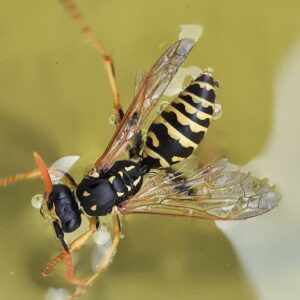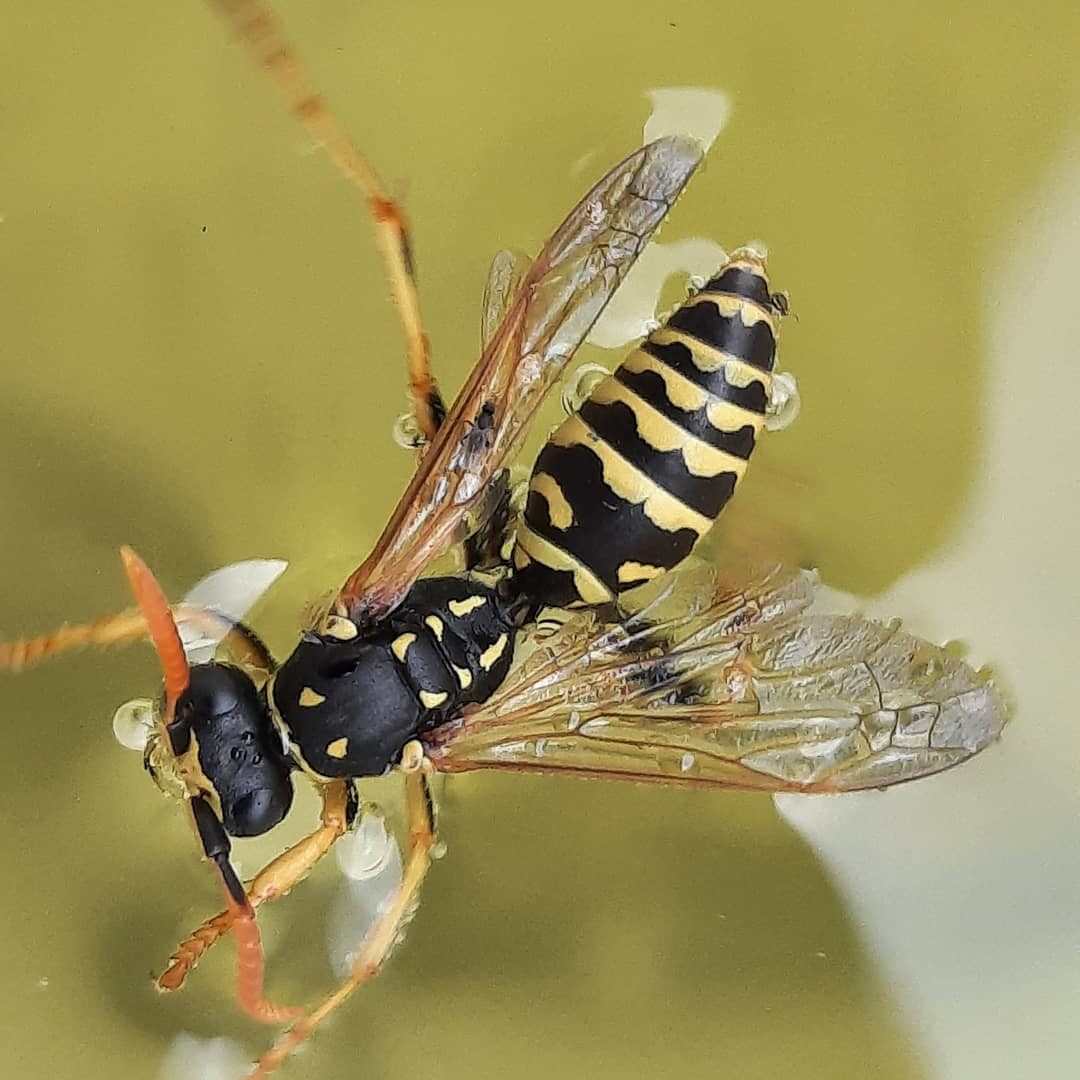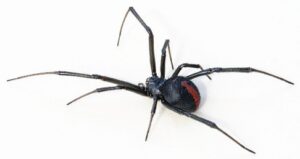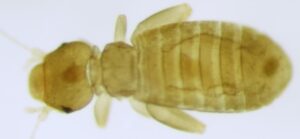Wasps:
Paper Wasp – Polistes dominula Christ
General Description
| · Paper Wasps or umbrella wasps get their name from the paper-like material that they use to create their umbrella-shaped nests.
· They have a narrow body and pinched waist, 1.5-2.5 cm long, and colored bright yellow with alternating black, · Wings are grayish in color, and the length of the wings in males ranges from 0,9 to 1.3 cm, while those of females range from 0.8 to 1.2 cm. |

Credit: Garnhami |
- Females have yellow, comma-shaped scutal spots.
- Females have a black subantennal mark that rarely has a pair of small, yellow spots.
- The female mandible is black and sometimes has a yellow spot.
- Males are often distinguished from female wasps by their curled antennae and lack of a stinger.
Life Cycle and Common Characteristics
- Overwintering females are fertilized and emerge to build a nest.
- The queen starts laying eggs in late March or early April.
- Larvae, after egg hatching, develop into female workers that help to take care of the single queen. Workers care for the eggs and larvae and forage for food.
- The existing queen starts producing males and new queens in the late summer. Then the males die off after mating and the newly fertilized queens overwinter.
- The queen survives the winter by hibernating behind the bark of trees, until the next spring when they emerge to start the reproductive cycle over again.
- Queens live longer than the males or the workers.
- Workers protect the queens from predators.
- The life cycle is shorter than a year.
- Paper wasps chew on wood and mix it with their saliva in order to create the paper-like material that they make their nests from.
- It was recently discovered that a paper wasp has the ability to recognize faces.
- The relatively high productivity of the paper wasp is correlated to the timing of its brood development. They have a short brood developmental time.
Damages and Economic & Medical Implications
- Paper wasps are beneficial insects. They feed on nectar and pollen and have a role in pollinating crops and plants. They also prey on nuisance insects.
- In urban areas, they colonize nearby human civilizations because man-made structures can act as great shelters and also are located close to the resources such as food.
- The paper wasp has a sting but is not aggressive, and will usually attack only to defend itself or the nest. Its sting can cause excessive sensitivity to some people, so the majority of people do not welcome it as a neighbor close to their homes.
- The venom from a paper wasp sting can cause a severe allergic reaction in some people that requires immediate medical attention to prevent serious consequences.




